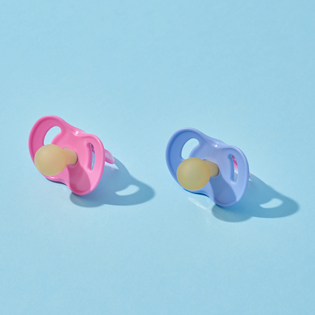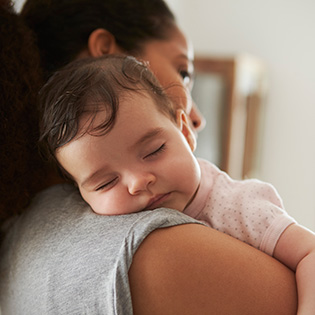Toddlers have an incredible capacity to make a mess; like human tornadoes, they'll strew the entire contents of their toy shelves onto the floor in a blink of the eye (or so it seems). And, frustratingly, they seem to enjoy the chaos; having their things at close hand, where they can be touched and played with, intensifies the fun and gives them a sense of security.
But toys on the bedroom floor (and in the hallway, the bathroom, the kitchen, the living room…) can be stepped on or tripped over, can get damaged, and pieces can be lost — all good reasons for your toddler to learn to put away his things.
Chances are, of course, your toddler probably won't think this cleanup idea is such a great one. You can help make it a not-so-hated habit by trying the following strategies.
- Limit the cleanups. Both you and your child will go crazy if you try to keep a cap on the mess all day. With younger toddlers, it's better to wait until the end of the day to clean up everything at once. Pick a consistent time (say, right before washing up for dinner), and make it a regular part of your child's daily routine. For older toddlers (closer to age 3), it's fine to ask that one individual activity be cleaned up and put away before a new one begins. If it's a game or puzzle you're doing together, put it away together, so that cleaning up becomes part of the game, too.
- Streamline his collection. Instead of having all of your child's toys available at all times, you might also try limiting how many toys are out each day or week. Doing a toy rotation every so often can help reduce the clutter to clean up and allow your child to focus on the toys in front of him for longer.
- Be flexible. If your child is building a block metropolis, or hasn't yet finished a tricky puzzle and wants to continue it the next day, allow him to set those projects aside. Don't let "I'm not done!" rule the room, but do respect your child's desire to keep at it. You might keep a special corner or table for projects-in-progress.
- Work together — and keep it fun. It's unrealistic (and, frankly, futile) to expect a young toddler to take care of all his things on his own, so share the work; you can tackle the tougher jobs (putting his books back on the shelf), while he handles tasks he's more capable of (herding up his blocks and tossing them in a bin). Turn your tasks into a game (set a kitchen timer and see who can finish first) or a learning experience (pointing out shapes or colors as you sort the toys) or a sing-along (make up your own cleanup song that you both can sing together), and you'll make it twice as fun.
- Break up the work. For an older toddler who is learning how to take on tougher cleanup projects, help him see that there's light at the end of the tossed-around toy tunnel by tackling his room in sections. For example, first tell him to make a pile of books, then have him put away his blocks, then ask him to put his trucks on their shelf. He'll feel less overwhelmed if you give him tasks one at a time.
- Make sure there's a place for everything. You can also help your child keep the chaos under control by making sure there's a designated play area and storage area, with places like bins, baskets and deep shelves where toys can be kept. Toy chests can be dangerous (and won't help much with keeping toys organized), but if you want one, make sure it has air holes, rounded or padded corners, and, if it must have one, a lid that is lightweight or hinged to stay open.
Finally, don't expect perfection, and make sure to heap lots of praise on your child for what he can do. Acknowledge his work, tell him what a great job he's doing, and he'll be motivated to keep at it.
More Games for Your Toddler











































 Trending On What to Expect
Trending On What to Expect





